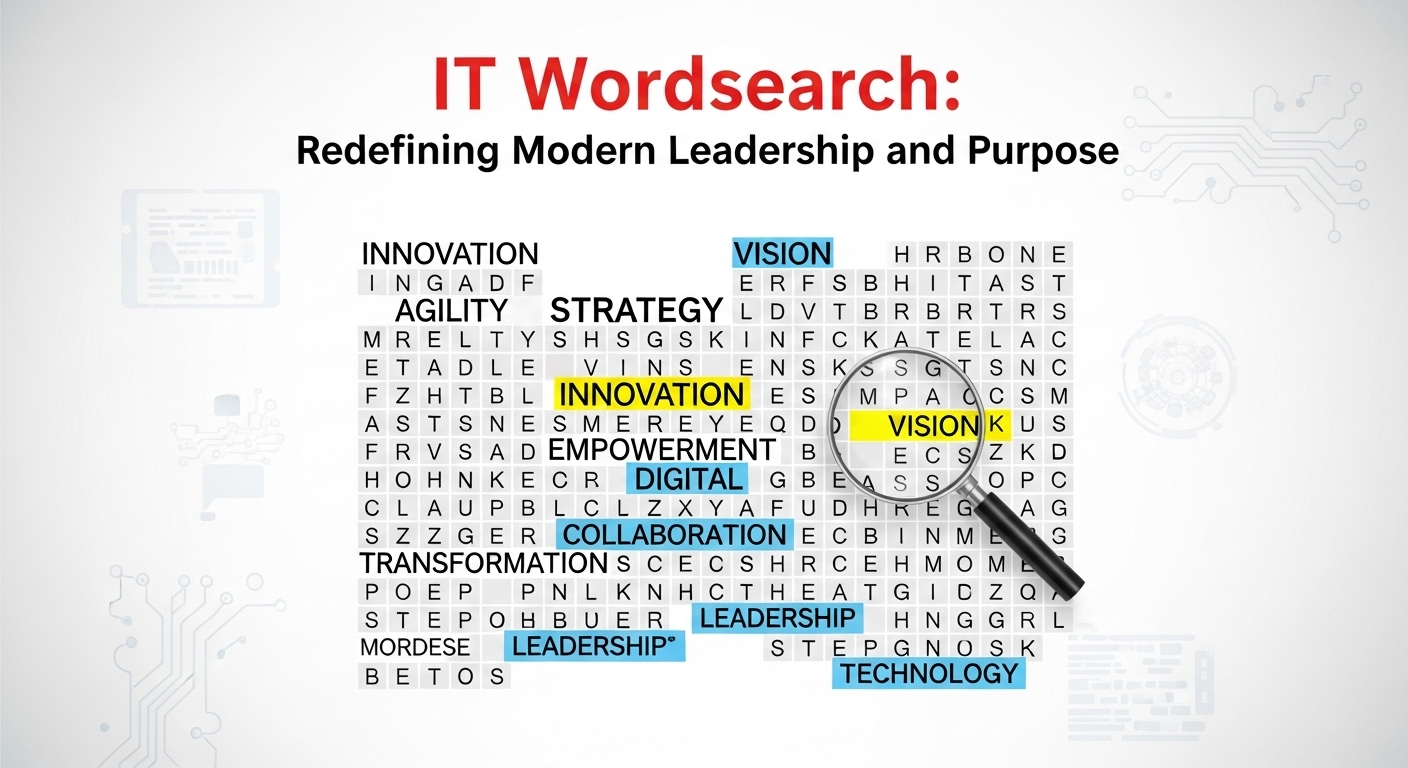BUSINESS
New Paths to Recovery: Innovative Strategies for Lasting Sobriety

Key Takeaways
- Recovery is an evolving journey that often blends traditional and innovative approaches.
- Personalized care, community support, and holistic strategies play a significant role in sustained sobriety.
- Recent innovations, supported by research, are making recovery more accessible and practical for diverse populations.
- Building effective coping mechanisms and maintaining healthy relationships are critical for preventing relapse.
- Access to evidence-based resources is essential for those seeking or supporting recovery.
The Landscape of Recovery Is Changing
Recovery from addiction is experiencing a transformative shift. Decades ago, approaches to sobriety were mainly centered on abstinence and uniform, heavily regulated programs. Now, innovative strategies and integrative care models are offering hope to those facing the multifaceted challenges of substance use. This evolution recognizes that recovery is not just about removing a harmful substance but about reshaping many areas of life, including relationships, purpose, and physical well-being. There’s a growing emphasis on identifying the root causes of addiction, whether that’s anxiety, trauma, stress, or genetics, and treating them with targeted, compassionate care. Individuals are increasingly aware that seeking help is a sign of strength, and the stigma once associated with rehabilitation is slowly diminishing in society.
Whether researching programs close to home or in a different state, many individuals pursuing rehab in Dover, NJ, are met with treatment plans prioritizing individual progress and lifelong wellness. Recovery is now seen as a dynamic, ongoing journey—one that’s enriched by support systems, medical expertise, and a wider range of therapeutic options designed to encourage positive lifestyle shifts long after the initial phases of sobriety.
Personalizing the Recovery Experience
Personalization is at the heart of today’s most effective recovery programs. Gone are the days when each patient would attend the same classes or participate in identical therapy groups, regardless of their backgrounds and circumstances. Modern recovery programs design care plans tailored to each individual, taking into consideration co-occurring mental health disorders, medical history, personal interests, and unique triggers. Customized support can range from cognitive behavioral therapy, group sessions, and medication-assisted treatment to life skills workshops, family therapy, and creative pursuits. The integration of telehealth platforms means that patients can now receive professional guidance, counseling, and even ongoing relapse prevention education wherever they are, especially important for those who may not have immediate access to urban treatment centers.
Support also comes from increased collaboration between healthcare providers, families, and communities. When a recovery plan takes a whole-person approach—addressing psychological needs alongside physical health and family dynamics—individuals experience better outcomes and increased self-confidence. This comprehensive support minimizes feelings of isolation and maximizes the odds of sustainable change.
Holistic Healing Takes Center Stage
Holistic healing strategies have gained immense popularity and backing within the addiction recovery community for their ability to complement evidence-based practices. Such approaches recognize that healing is most effective when all aspects of a person’s life are considered, including mental, physical, emotional, and spiritual health. Treatment plans may incorporate yoga to reduce anxiety, meditation for mindfulness, balanced nutrition, fitness routines to boost mood, creative therapies like music or art, and even outdoor activities to reconnect with nature.
The NIH HEAL Initiative is a powerful example of the push to merge scientific research with holistic practices to address pain and addiction. These initiatives have demonstrated that the risk of relapse significantly decreases when patients feel empowered to participate in their wellness, by, for example, learning stress-reducing techniques or exploring new hobbies. After embracing these therapies, real-life stories abound of individuals who have built new routines and found joy, resilience, and meaning beyond sobriety.
Coping Skills to Prevent Relapse
Preventing relapse remains a fundamental concern throughout the recovery journey. Triggers or stressors that tempt a return to old habits are standard, and relapse is not an indication of failure but rather a signal for renewed support and fresh strategies. Successful recovery plans focus on practical, daily coping skills that empower individuals to manage these challenges proactively. These skills are introduced early and reinforced through ongoing counseling and real-world exercises.
- Establishing consistent routines that support physical and mental well-being.
- Identifying and avoiding—or healthfully confronting—risky situations and environments.
- Cultivating alternative responses to cravings, such as reaching out to a friend or practicing a grounding exercise.
- Engaging in meaningful activities that fill time, once spent on harmful behaviors.
- Finding motivation through helping others or volunteering strengthens both self-worth and accountability.
Tools like cognitive behavioral strategies, daily journaling, and even regular exercise become part of a personalized arsenal against relapse. With each successful navigation of temptation or stress, confidence grows, and recovery momentum increases.
The Role of Community and Connection
Human connection is a powerful catalyst for sustained sobriety. Studies consistently find that individuals who feel supported by a caring community, family, friends, a faith group, or a peer support network are likelier to stick with their recovery plans and find meaning in everyday life. Recovery communities nurture trust, empathy, and encouragement, reminding participants that they’re alone in their journey and that setbacks do not define their future.
Effective community-based support systems can improve recovery rates and reduce the risk of relapse by fostering belonging and providing regular check-ins. Technology has expanded these opportunities: virtual meetings, message boards, and recovery apps make it possible to access connection and support any time, from anywhere. These platforms reduce feelings of isolation, increase accountability, and often introduce individuals to a broader network of understanding peers eager to offer motivation and share coping strategies.
Innovation in Access and Reducing Stigma
Access and stigma are two of the most significant traditional barriers to entering and continuing addiction treatment. Stigma keeps many from seeking help, for fear of judgment or misunderstanding, while limited resources—especially in rural or underserved regions—mean that quality programs have not always been within easy reach. Today, innovative digital tools and public education campaigns are changing that.
Discreet mobile apps, online counseling, and virtual recovery communities have made support available 24/7. Before attending an in-person session, many people are now introduced to treatment through these low-barrier options. Meanwhile, organizations and advocates are leading public campaigns and workplace education efforts to help frame addiction as a medical condition that deserves compassion and evidence-based care. As a result, more people feel empowered to seek treatment, and companies and public services are implementing policies that promote recovery-friendly environments.
Why Evidence Matters in Recovery
While untested or”“quick-fi”” solutions can be tempting, the importance of evidence-based approaches in recovery cannot be overemphasized. Clinical research has demonstrated that interventions like cognitive behavioral therapy, contingency management, and medication-assisted treatment are the most effective for long-term sobriety. Programs that use evidence-backed practices are more likely to deliver consistent, reliable results and adapt new strategies as advances in research occur.
Those considering recovery, or supporting others, are encouraged to ask questions about the methods being used and to seek out centers and professionals that align with current best practices. Staying current with reputable, peer-reviewed sources protects patients and builds trust throughout their journey.
Taking the First Step
Committing to recovery is a significant leap, filled with uncertainty and hope. For many, the initial stage means exploring available resources, building a support team, and laying the groundwork for future success. Today, with the expansion of evidence-based programs, holistic healing modalities, and digital tools designed to reduce barriers, individuals starting their recovery journey have more options and flexibility than ever before.
The journey is rarely linear, but each step forward—whether by joining a support group, seeking professional guidance, participating in holistic therapies, or sharing one’s experiences- brings new insights and opportunities for growth. With openness to change, access to reputable support, and the understanding that lasting recovery is a process, everyone has the potential to create a more fulfilling and healthy future. Innovative strategies, strong relationships, and a comprehensive approach pave the way for more people to reclaim their lives and thrive in sobriety.
BUSINESS
Common Legal Issues in Residential Real Estate and How to Address Them

Navigating residential real estate transactions can involve various legal challenges that homeowners and buyers should be aware of. Common issues include unclear property titles, zoning disputes, boundary disagreements, and contract misunderstandings. Addressing these matters proactively can prevent costly delays and protect all parties involved. Understanding the basics of real estate law helps individuals recognize potential pitfalls before they escalate into serious problems.
Engaging with professionals knowledgeable in real estate law can guide you in drafting contracts, resolving disputes, and ensuring compliance with local regulations. By seeking informed advice early, homeowners and buyers can reduce risk, streamline transactions, and safeguard their investments. Awareness and preparation are key to handling legal complexities effectively while maintaining confidence throughout the buying or selling process.
Title and Deed Fraud
Title fraud is a significant issue in which criminals transfer property ownership illegally by forging signatures or using other fraudulent means. This not only compromises ownership but may also leave you liable for debts or liens tied to your property. To protect your home, periodically monitor the status of your property title and consider using title lock services that can notify you of any unauthorized changes to your title. Title insurance, which most lenders require, also provides a crucial layer of protection for homeowners.
Undisclosed Property Defects
When selling property, sellers are legally obligated to disclose any known issues; however, some defects may remain hidden until after the sale has been completed. Commonly undisclosed issues include water damage, faulty wiring, and past pest infestations, which can result in significant costs for buyers. Buyers must conduct a thorough home inspection and scrutinize disclosure forms, maintaining clear communication with inspectors to document potential issues. If defects arise after the sale, buyers may have legal avenues for compensation or to rescind the contract.
Breach of Contract
Residential real estate deals are governed by contracts detailing every aspect of the transaction, from price and contingencies to required repairs and closing dates. Breaches can occur if any party fails to meet their obligations, for instance, by not repairing a leaky roof as promised or missing crucial deadlines. Preventing breaches begins with clear and precise language in contracts and diligent communication among all parties. Understanding residential real estate law is essential, as it provides the framework for enforcing agreements and resolving disputes. In the event of a potential contract violation, consulting with a real estate attorney can help explore remedies such as mediation, renegotiation, or pursuing damages through legal channels.
Financing and Mortgage Issues
Financing problems or misconceptions about mortgages, such as loan denials after an offer, misunderstandings about interest rates, and mistakes in documentation, can make a real estate transaction difficult. Before closing, buyers should maintain good credit, avoid making significant financial changes, and thoroughly understand their loan terms and conditions. To mitigate risks and prevent unforeseen issues, it is crucial to maintain open lines of communication with lenders, including documenting all conversations.
Zoning and Land Use Restrictions
Zoning laws regulate the use of properties, including structures, businesses, and fences. Ignoring local ordinances can lead to legal issues or the removal of modifications. Check the regulations on your city or county website and consult with planning officials before making changes to ensure compliance and avoid costly errors.
Homeowners Association (HOA) Disputes
Neighborhoods governed by HOAs come with additional rules and responsibilities. Disputes over landscaping, parking, noise, or architectural changes are common and can lead to fines or legal conflicts if not handled carefully. Before committing to a property in a managed community, scrutinize the HOA’s covenants, conditions, and restrictions (CC&Rs), and attend community meetings if possible. If you find yourself facing a dispute, approach your HOA board promptly and maintain a documented record of correspondence to facilitate quick and amicable resolutions.
Boundary and Survey Disputes
Accurate boundary identification is crucial for maintaining peaceful neighbor relationships and facilitating future transactions. Disputes may arise from misinterpreted property lines, encroachments, or unclear lot descriptions. Buyers should always order a fresh professional survey before closing and review all records for discrepancies. Resolving boundary disagreements amicably is ideal, but legal recourse may be necessary if talks fail. County assessor offices and historical deed records often provide valuable documentation during such disputes.
Conclusion
By proactively identifying and addressing these common legal issues in residential real estate, you reduce the likelihood of disputes and financial setbacks. Relying on professionals, including attorneys, inspectors, and local government officials, is crucial to navigating the process safely. Make informed decisions, keep diligent records, and stay current with your obligations to ensure a successful and secure real estate experience.
BUSINESS
The Power of Peace of Mind: Why Insurance Is an Investment, Not an Expense

Understanding Insurance as an Investment
Understanding insurance as an investment means recognizing that certain policies serve a dual purpose: offering financial protection and building long-term value. Unlike savings accounts, these policies create a safety net and accumulate cash value, like life insurance growing through interest or dividends, providing coverage and wealth buildup. Viewing insurance this way helps individuals choose policies aligned with their financial goals and risk tolerance. Even standard policies, such as auto insurance, contribute to financial planning by covering damages and liabilities, preventing major expenses that could affect budgets or investments. Recognizing insurance’s dual role as protection and potential investment allows for better financial stability and peace of mind.
Major Types of Insurance and Their Benefits
Each insurance type serves a specific purpose. Health insurance covers unexpected illnesses, providing lifesaving care when needed. Property and homeowner’s insurance help rebuild after fires or storms. Auto coverage protects your vehicle and passengers and fulfills legal requirements, shielding parties from losses. Policies can be customized with add-ons like identity theft or bundling car, house, or business liabilities to suit your needs. Home insurance is essential for homeowners, protecting against weather damage, theft, and liability, so you can rest easy. The right coverage considers your assets, lifestyle, and goals, building a safety net. When choosing insurance, look beyond premiums to the long-term impact of coverage.
The Economic Impact of Insurance on Communities
Insurance isn’t just about individual peace of mind; it fortifies entire communities. When people and businesses insure their property, health, and liabilities, they’re more likely to innovate, expand, and support local economies without the threat of catastrophic loss holding them back. In times of crisis, insurance payouts for rebuilding and recovery help stabilize neighborhoods and reduce the strain on public resources.
Economists have observed for a long time that insurance significantly supports entrepreneurship and investment in new ventures. Industries with good coverage tend to withstand economic downturns better and recover more quickly from unexpected shocks. Without the reassurance provided by insurance, growth and innovation would slow down considerably, and the potential risks might prevent significant advancements.
Integrating Insurance into Long-Term Financial Planning
Insurance should be a pillar of any sound financial plan. Start by assessing which risks could cause serious setbacks and match coverage types to those needs. For example, young families often prioritize life insurance for security, while property owners focus on home protection. Consistently reviewing policies ensures your protection evolves along with life changes, from family milestones to new business ventures.
Smart policyholders treat premiums as contributions toward future security—much like retirement savings or investments in education. This proactive mindset isn’t about compliance or mere obligation; it’s about wisely positioning yourself and your loved ones to weather whatever comes, while supporting the stability and prosperity of your broader community.
Conclusion
In today’s unpredictable world, the value of insurance extends far beyond a monthly bill. It is a critical investment, weaving together individual peace of mind with the collective strength of families, homeowners, and business owners. By embracing insurance as a strategic tool rather than an expense, you empower yourself to pursue your dreams and build a future fortified against life’s uncertainties.
Building your protection strategy now lays the groundwork for confidence, stability, and security—qualities that enrich not only your own life but also the broader community and economy. Make insurance a purposeful component of your financial plan and experience the freedom that comes from true peace of mind.
BUSINESS
IT Wordsearch: Redefining Modern Leadership and Purpose

In today’s rapidly evolving world, leadership is no longer defined solely by financial success or corporate expansion. The most influential leaders are those who integrate business excellence with social responsibility, building organizations that thrive while uplifting communities. One such emerging perspective in this landscape is IT wordsearch—a concept that symbolizes the search for meaning, alignment, and innovation in modern leadership.
This article explores how IT wordsearch represents more than a puzzle-like curiosity. It reflects a deeper leadership journey—one where purpose and performance align, where success is measured not only in profits but also in people, culture, and long-term impact.
What is IT Wordsearch?
At first glance, it wordsearch may sound like a simple activity: finding hidden words within a grid. Yet when applied to leadership and business, the phrase takes on a symbolic meaning. It suggests a process of discovery, alignment, and focus. Just as players search for hidden words, leaders must search for solutions, values, and strategies hidden within the complexity of today’s global challenges.
The idea resonates with professionals who believe that economic growth and positive social change are not mutually exclusive but deeply interconnected. Much like solving a wordsearch, success lies in recognizing patterns, connecting dots, and uncovering possibilities others may overlook.
A Leadership Philosophy Rooted in Discovery
At the heart of the it wordsearch philosophy is the belief that leadership is a continuous search for purpose. This approach emphasizes three core values:
- Empathy in leadership: Understanding the human side of business, from employees to customers.
- Sustainability: Ensuring long-term growth by balancing profitability with environmental and social responsibility.
- Collaboration: Building partnerships that amplify both business outcomes and community well-being.
This framework reflects a growing awareness that modern organizations do not exist in isolation. They are part of larger ecosystems where every decision has ripple effects. Leaders who embrace the it wordsearch mindset don’t just chase immediate wins—they uncover deeper value that sustains both business and society.
Bridging Business Growth with Social Impact
What makes the it wordsearch approach so powerful is its ability to link corporate success with community impact. Much like finding words hidden within a grid, leaders must look beyond the obvious to discover opportunities for shared growth.
Examples of this approach include:
- Workplace Culture: Designing inclusive, supportive environments that attract and retain diverse talent.
- Community Investment: Reinvesting resources into education, local initiatives, and social programs before they become urgent needs.
- Innovation for Good: Using technology to solve pressing challenges, from environmental sustainability to equitable access to services.
When these values are embedded into strategy, businesses create a virtuous cycle: strong companies nurture stronger communities, which in turn sustain future growth.
Influence in the Digital Age
The digital landscape has amplified the importance of acting with foresight. Just as a wordsearch reveals hidden connections, the digital world reveals opportunities for influence and innovation. Leaders today use platforms not only for visibility but also to inspire movements and conversations around responsible practices.
With it wordsearch as a guiding principle, leaders leverage digital tools to:
- Reach broad audiences with authentic messages.
- Engage younger generations who value transparency and inclusion.
- Inspire peers to adopt purpose-driven strategies.
In this sense, digital influence is no longer about self-promotion—it is about amplifying messages that shape industries and communities alike.
A Model for the Next Generation
The rise of it wordsearch as a metaphor for leadership aligns closely with the values of Millennials and Gen Z. Younger professionals increasingly seek role models who:
- Live authentically, aligning values with action.
- Promote diversity and equity, not as an afterthought but as a foundation.
- Think globally, addressing interconnected challenges such as climate change, inequality, and digital ethics.
These expectations highlight why it wordsearch resonates—it symbolizes the search for alignment in an often disjointed world. By embodying these principles, leaders position themselves not just as executives but as mentors and trailblazers.
Challenges in the Search
Like solving a difficult puzzle, applying the it wordsearch philosophy is not without challenges. Leaders face:
- Balancing short-term pressures with long-term commitments to purpose.
- Convincing traditional stakeholders of the measurable value of social responsibility.
- Navigating uncertainty in rapidly changing markets and technologies.
However, these challenges are also opportunities. Much like hidden words, solutions often lie just beneath the surface. Leaders who embrace curiosity and adaptability can turn obstacles into breakthroughs.
Why the Wordsearch Metaphor Matters
The metaphor of it wordsearch matters because it reflects the complexity of modern leadership. Success isn’t about finding a single answer; it’s about uncovering many interconnected solutions. A leader who can anticipate challenges, spot hidden opportunities, and align strategy with purpose is far better equipped to guide organizations through uncertainty.
This proactive mindset is essential in a world where reactive leadership often falls short. Waiting until challenges dominate headlines is too late. By searching for solutions early—before they are visible to all—leaders create lasting resilience.
Looking Ahead
As leadership continues to evolve, it wordsearch represents more than a clever metaphor. It is a call to action: to search for meaning, embrace complexity, and discover opportunities before they become urgent.
In a world where consumers, employees, and investors increasingly demand accountability, the leaders who succeed will be those who treat every challenge like a wordsearch puzzle—hidden with possibilities waiting to be uncovered.
The future belongs to leaders who see beyond profits, who connect performance with purpose, and who embrace the ongoing search for what truly matters. In the end, the most powerful leaders are those who uncover meaning not after the fact, but during the process—just as one finds words hidden in a puzzle grid.
-

 HEALTH2 years ago
HEALTH2 years agoIntegrating Semaglutide into Your Weight Loss Plan: A Practical Guide
-

 HOME IMPROVEMENT2 years ago
HOME IMPROVEMENT2 years agoHow to Choose the Perfect Neutral Area Rug for Every Room
-

 LAW1 year ago
LAW1 year agoTeenage Drivers and Car Accidents in California: Risks and Parental Liability
-

 CONSTRUCTION1 year ago
CONSTRUCTION1 year agoConstruction Site Safety Regulations in New York and Your Rights as a Worker
-

 LAW1 year ago
LAW1 year agoPost-Divorce Considerations in California: Modifications and Long-Term Planning
-

 HOME2 years ago
HOME2 years agoSandra Orlow: The Teen Model Who Captivated the Internet
-

 FINANCE1 year ago
FINANCE1 year agoDigital Asset Management in Florida Estate Planning
-

 FASHION2 years ago
FASHION2 years ago7 Celebrity-Inspired Elegant Summer Dresses For 2024


